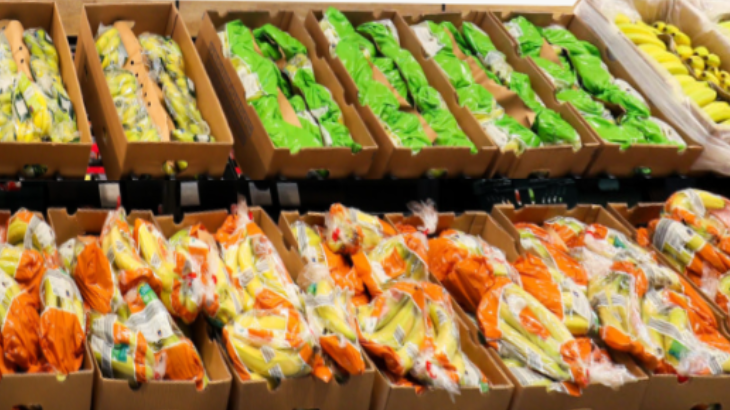Plastic Packaging for Fruit and Vegetables

Recently the organisation WRAP (The Waste and Resources Action Programme) has been calling for the removal of all plastic packaging from fresh fruit and vegetables1. This is not as simple as they make it sound.
A short article in the Fresh Produce Journal today (22nd October) by Jack Ward, director of the British Growers Association, says that the future of fresh produce packaging must be considered from more than one perspective2. He agrees with the long-term aim of removing plastic packaging. Most plastics are derived from oil and are adding to the CO2 in the atmosphere or causing pollution when not disposed of properly.
Hygiene
If produce is sold ‘free flow’ (unpackaged) it can be handled by many other customers.

Whereas there are strict hygiene measures in any fruit or vegetable packhouse, this control is lost as soon as loose produce is put on display. Customers cannot be forced to use hand sanitiser before handling produce. Customers can be advised to wash fruit before eating, but there is no guarantee that they will. I have seen a pear on display in a supermarket where a customer has taken a bite to test its ripeness!
Stock Control
Packaging allows the shop to show information about many things including ‘display by date’. Without this the vegetables at the bottom of the display could have been there for a very long time. In addition, the bar code gives lots of other information, for example the farm or country of origin. In the event of a complaint or worse, traceability is important.
Display
In my farm shop (in the last century) we often used free flow, but the biggest problem was keeping the display looking attractive. Just as at home, where the family always choose the best looking apple in the fruit bowl leaving the grottiest for mum, so in the shop the worst fruit rises to the top and the display soon looks jaded. We employed someone to look over the display regularly and remove substandard fruit for bagging and selling at half price.
Shelf-life
Many plastics are very clever. By modifying the atmosphere in the package, shelf life and eating quality can be extended both in the store and in the home. This cuts down waste.
Alternatives to fossil plastic
Other materials are available. Recycled, vegetable derived polymers and so on. They will add cost and may not be available in such large and consistent quantities. But they must be part of the future.
No simple solution
So WRAP are right in calling for the end of fossil fuel plastic packaging, but it is not as simple as banning it. Growers, packers and retailers need to get together urgently with WRAP and devise a workable programme to be enshrined in law. The fact that it is difficult should not hide the urgency. And the problem is not just in the UK. We can start by enforcing the same laws on imports as we enact at home.

